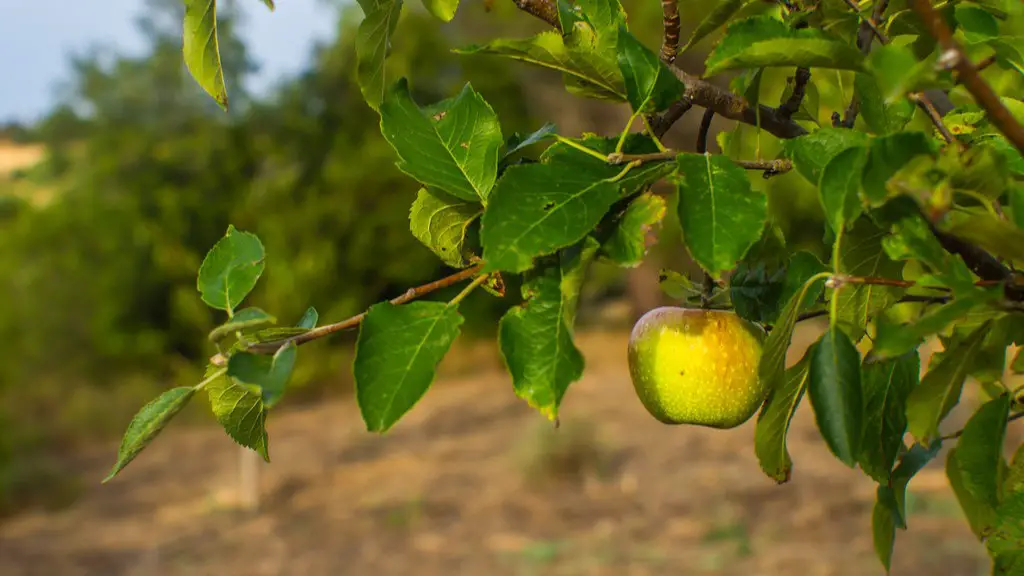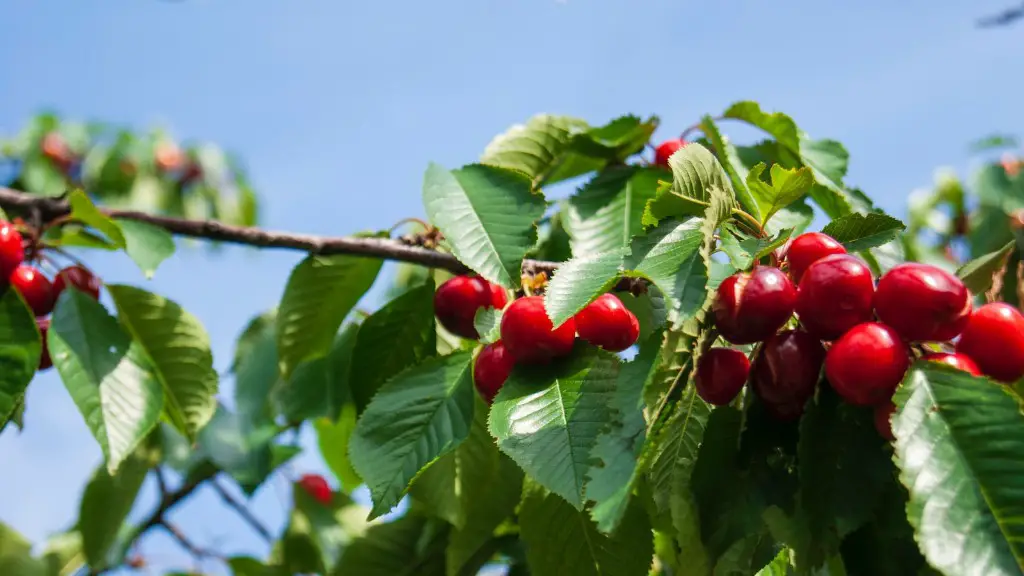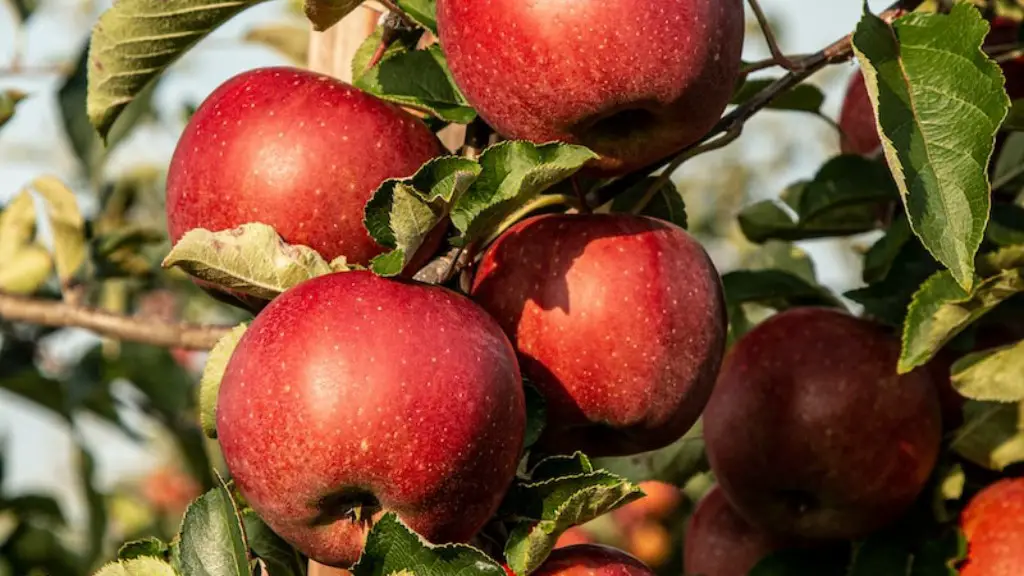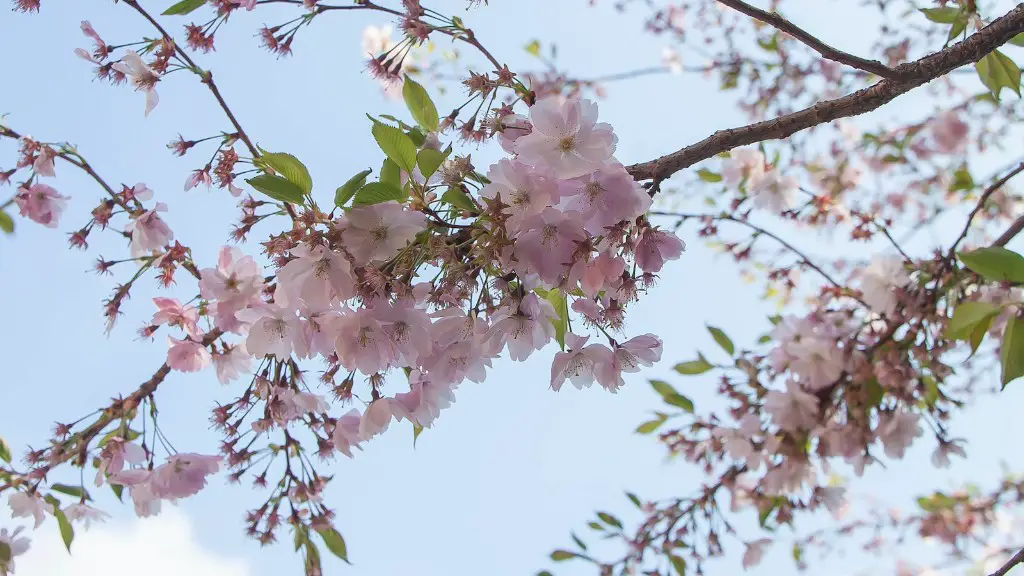Apple trees are subject to a number of fungal diseases, including powdery mildew, black rot, cedar apple rust, and fruit tree canker. While some of these diseases can be controlled with chemicals, others are best controlled with preventive measures.
Apple tree fungus can be treated with a number of different fungicides. You can also try to remove the affected leaves or branches, and dispose of them properly.
What is the best fungicide for apple trees?
Hi there!
We wanted to share our top picks for the best systemic and contact fungicides, as well as the best small and large sprayers for trees.
For systemic fungicide, we recommend Hi-Yield Vegetable, Flower, Fruit and Ornamental Fungicide. This product is great for vegetables, flowers, fruit, and ornamental plants.
For contact fungicide, we recommend Southern Ag Captan 50W Fungicide. This product is ideal for killing fungi on contact.
For a small sprayer ideal for 1-2 trees, we recommend the CHAPIN 2 Gallon Sprayer. This product is perfect for small jobs.
For a large sprayer ideal for 3+ trees, we recommend the NorthStar High-Pressure Tree/Orchard Sprayer. This product is our favorite for larger jobs!
If you see brown spots on the flower ends of the fruit, this is the first sign of infection. These spots will grow into concentric circles and rot the fruit. The tree’s leaves may develop small holes or purplish brown spots that look like a frog’s eyes.
When Should I spray my apple tree for fungus
The most important period to spray apple trees is from petal drop until just prior to harvest. Several applications will need to be made during this period. A home orchard type spray (available at most garden centers) is the best product for home gardeners.
The best method to control and prevent this disease from damaging your trees is to spray fungicides for these fruit trees at regular intervals of two to three weeks during the period when disease pressure is the highest and the conditions are right for the fungus to develop and spread. Fungicides will help to kill the fungus and prevent it from causing further damage to your trees.
Can you spray apple trees with dish soap?
Aphids are a common problem for fruit trees, but they can be easily controlled using simple methods. Easily identified by their small size and large grouping, aphids can come in many different colors. On her homestead, Katie uses a simple water and dish soap spray for her apple tree. It can be applied every 2-3 days for 2 weeks.
Aphids are small sap-sucking insects that can infest apple trees. They excrete a sticky substance called honeydew, which can lead to the growth of sooty moulds. A number of different species of aphid can affect apple trees, some of which leave the tree in summer to find other host plants, while others remain on the tree.
What is a natural remedy for apple tree fungus?
Powdery mildew is a type of fungus that can affect different types of plants, including apple trees. The fungus manifests as a white, powdery substance on the leaves and branches of the tree. If left untreated, powdery mildew can cause the leaves of the tree to yellow and eventually drop off. The fungus can also affect the fruit of the tree, causing it to rot.
To treat powdery mildew, apple trees should be sprayed with lime sulfur. In addition, any shoots that are infected with the fungus should be pruned away. To prevent the mildew from returning, it is important to clean up any leaves that have fallen from the tree in the fall.
Mushroom conks are an important part of the forest ecosystem and should be left undisturbed. If you see them growing on your trees, don’t knock them off as this could release billions of spores into the air, infecting other trees and plants.
What happens if you touch tree fungus
This is good to know, as many people are worried about the safety of tree fungi. They should know that tree fungi pose no threat to humans, so they need not worry about it.
There are many different types of tree fungi, and each one requires a different treatment. Some tree fungi can be treated with chemical fungicides, while others require a more natural approach. No matter what type of tree fungus you have, you can usually get it under control with the right treatment.
Can you spray apple trees when fruiting?
Fruit fly is a serious problem for many growers as they can cause significant damage to crops. In some cases, spraying for fruit fly may be the best option to control these pests. There are bait sprays that can be used to attract and kill these insects. These sprays are best applied to the trunk and foliage of the tree and should not be sprayed on the fruit.
Spraying your trees with insecticide is important to protect your fruit crop, but timing is everything. If you spray too late, the pests will have already entered the fruit and will be protected from the spray. If you spray too early, the spray will have dissipated and will be ineffective when the insects attack. The best time to spray is a few weeks before the fruit is ripe.
What is the best treatment for tree fungus
Fungal diseases are a serious threat to trees, and often the only way to save them is to remove them and chemically treat the area. In some cases, however, pruning of infected areas and fungicide treatments can be effective.
Baking soda is a popular ingredient for homemade plant fungicide. Mixing it with water creates a mixture that can be used to kill fungus on plants. The baking soda will act as a mild abrasive and the soap will help to loosen the fungus from the plant.
What is the best natural fungicide for trees?
Bicarbonates, like baking soda, have been used as a natural option for fungicides for a long time. Ammonium bicarbonate and potassium bicarbonate are recommended over baking soda. This is because they are effective without the additional use of oils.
Epsom salt is a great way to boost the magnesium levels in your fruit trees. This will help them yield larger, sweeter, and more fruit. It works great also for nut trees and fruit shrubs.
Warp Up
Apple tree fungus can be controlled with fungicide sprays. Apply the fungicide to the tree according to the package directions. Be sure to cover the entire tree, including the trunk, branches, and leaves. Apply the fungicide every two weeks until the fungus is gone.
If you notice apple tree fungus, it’s important to take action immediately. The first step is to prune away any affected branches. Then, you’ll need to spray the tree with a fungicide. Be sure to follow the instructions on the label carefully. With proper treatment, you should be able to get rid of the fungus and keep your apple tree healthy.




